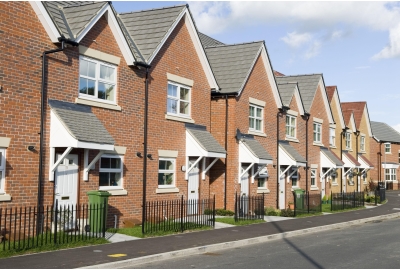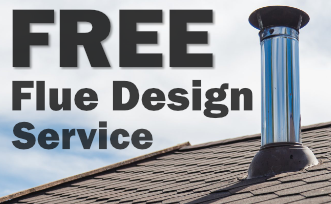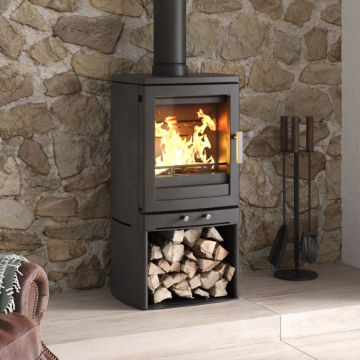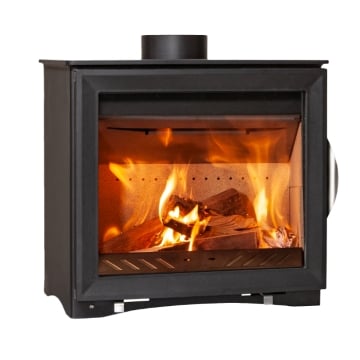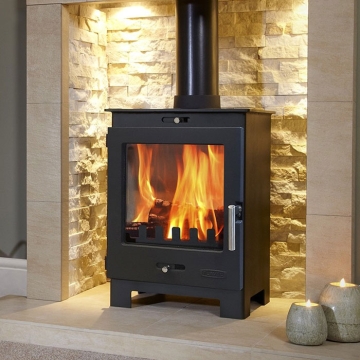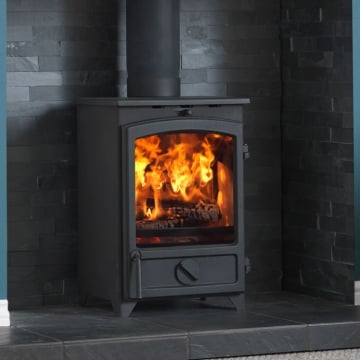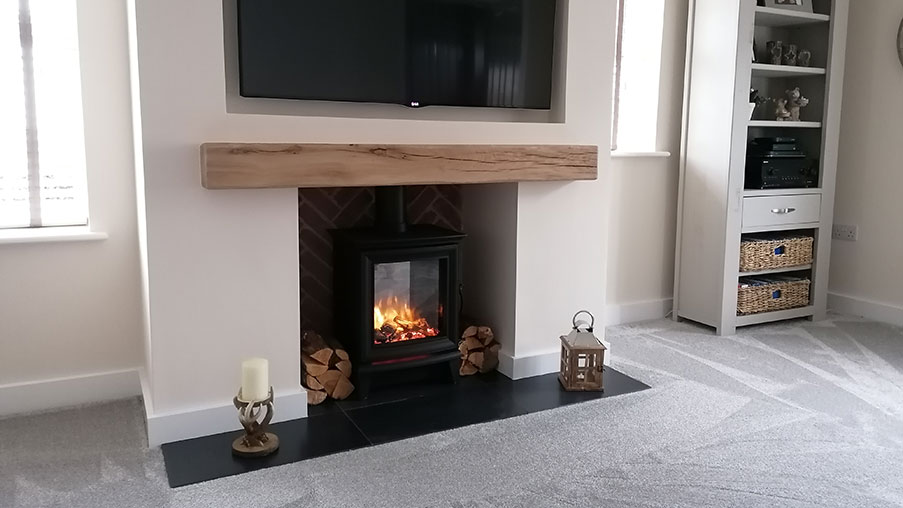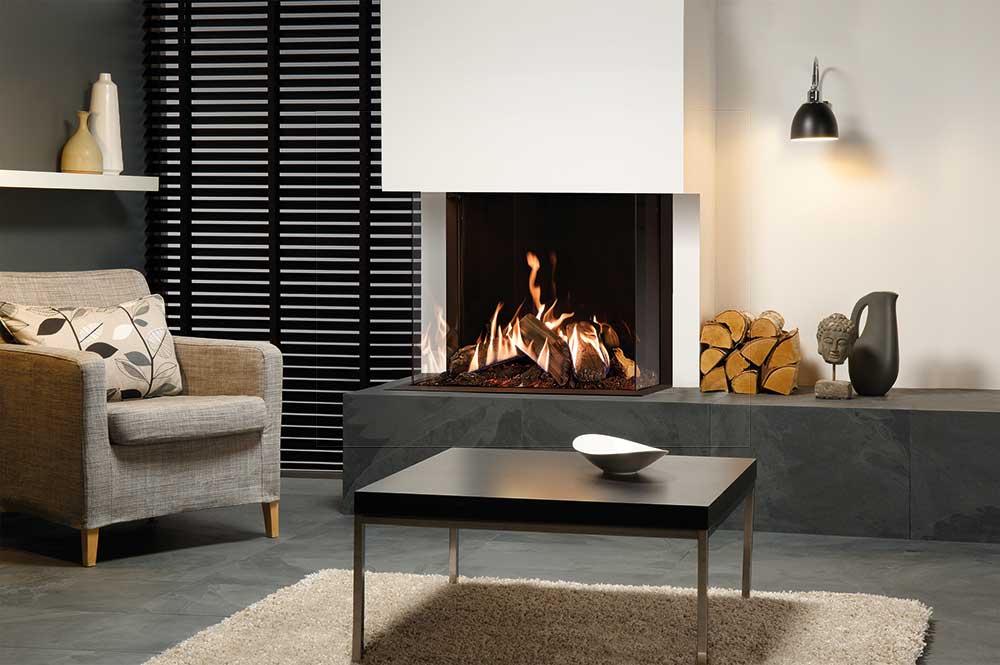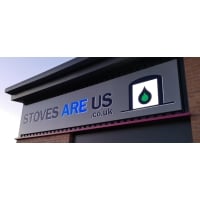The short answer is yes, absolutely yes! It is possible to install a wood burner in a new build house and adding a wood burner to a new build home can be a cosy and cost-effective way to heat your living space. However, before you make a decision, it's important to understand the regulations and considerations involved. It is highly likely that your new build home will not have a brick-built chimney but this doesn’t mean you cannot have a log burner. Here are the things you need to know before installing a wood burner in your new build home.
Contents
Ensure Proper Chimney Installation & Ventilation
Consider the Type of Wood Burner
Choose a Suitable Location for Your Wood Burner
Check Building Regulations and Local Authority Requirements
Hire a Professional Installer
Other Types of Fireplaces Suitable for a New Build
Ensure Proper Chimney Installation & Ventilation
When installing a wood burner in a new build home, it's crucial to ensure that the correct type of chimney is installed. Wood burners produce smoke and other combustion gases that need to be safely removed from your home so you’ll need a twin-wall chimney system! You can consult with a professional installer or fill out one of our flue design forms to ensure you are buying the correct flue parts for your stove.
New-build properties can be very well insulated and often airtight so the log burner you are looking to install will likely need a fixed air vent within the room it is being installed in. Alternatively, there are stoves available with a direct air supply or outside air kit, this gives you the option to directly supply the stove with the air it needs rather than having an air vent in the room. Without enough air supply, you may run into problems such as smoke exiting through the stove's air vents and into your newly decorated room!
Consider the Type of Wood Burner
When considering installing a wood burner in your new build home, it's important to think about the type of wood burner and the fuel you want to use. There are many different types of wood burners available, including freestanding contemporary stoves, multi-fuel stoves and inset & cassette stoves. Each type has its own advantages and disadvantages, so it's important to choose the one that best suits your needs and preferences. You should also consider the type of fuel you want to use, such as wood, smokeless coal or pellets and ensure that it is suitable for use in your chosen wood burner. Some types of fuel may not be allowed in certain areas, so it's important to check local regulations or ensure you purchase a Defra Approved stove so you’re covered if you live within a smoke-controlled area.
If you’re in the early stages of buying a log burner here are a few options for you to consider, these are stoves that our customers love and are all Defra Approved.
Choose a Suitable Location for Your Wood Burner
Before installing a wood burner in your new build home, it's important to choose a safe and suitable location. The wood burner should be placed on a non-combustible hearth but depending on the stove you buy this will need to have a minimum depth of 12mm or more for certain models. You’ll want to position the stove well away from any flammable materials such as curtains or furniture too.
It is also really important to ensure that there is enough space around the wood burner for proper ventilation and that it is not placed near any doors or windows. The clearance needed around a log burner differs from model to model, the manufacturer will test the stove and provide you with the minimum clearances you’ll need around the stove to both combustible and non-combustible materials; you’ll find all this information on our website or within the manual of the stove.
The final consideration when installing a stove in a new build home is whether you choose to have a false chimney breast built or not. A twin wall system doesn’t necessarily need to be boxed in but if you like traditional-looking log burners then having a false chimney breast installed to house the flue and stove is a popular choice for many. If this sounds like an option you like you may wish to view the brick fireplace chambers we supply, they can really add to the aesthetic of a false chimney.
Check Building Regulations and Local Authority Requirements
Before installing a wood burner in your new build home, it's important to check the building regulations and local authority requirements in your area. Building regulations are in place to ensure that the installation of a wood burner is safe and complies with the necessary standards. Local authorities may also have specific requirements or restrictions in place, such as the type of fuel that can be used. It's important to do your research and ensure that you comply with all regulations and requirements before installing a wood burner in your new build home.
Hire a Professional Installer and Get a Certificate of Compliance
When it comes to installing a wood burner in a new build home, it's important to hire a professional installer who is registered with a competent person scheme such as Hetas. This should ensure that the installation is carried out safely and in compliance with building regulations document J. After the installation is complete, your installer should provide you with a certificate of compliance, which confirms that the installation meets the necessary safety standards. Keep this certificate in a safe place, as you may need it for insurance purposes or if you decide to sell your home in the future.
Other Types of Fireplaces Suitable for a New Build
There’s no denying that a fireplace within a living room creates a wonderful focal point, they are a place where the family comes together to enjoy each other's company or watch your favourite TV program together.
If a wood-burning stove isn’t the right option for your new build home don’t panic there are plenty of other options to choose from that can create an equally striking statement. Here are two fantastic alternative heating options for the living room of your new build home.
Electric Fires - Perhaps the most cost-effective and simple installation of all is an electric fire or electric log burner. These heating appliances require little more than a plug socket making them a great option for a new build. Another option is to install a faux chimney breast for a media wall electric fire, these products are becoming increasingly popular for new builds and it's easy to see why! The media wall itself can be measured and designed to best suit the size of your living room, you can also customise the wall to include handy shelving or down-lights for an added wow factor.
Built-In Gas Fires - There are balanced flue and conventional flue gas fireplace options. Conventional flue fires still require a chimney like a log burner does but you could have a pre-fabricated flue system installed. The same ventilation requirements apply, but a Gas Safe installer will be able to advise you on what is best for your home and ensure the work is carried out correctly.
Balanced flue gas fires do not require a brick-built chimney and are often supplied with the flue components you’ll need to install them; they’re a great choice for a new build home! A balanced flue works in conjunction with a glass-fronted gas fire or stove, they are sealed from the room in which they are installed and the balanced flue pipe transports the gases from the fire straight outside.

